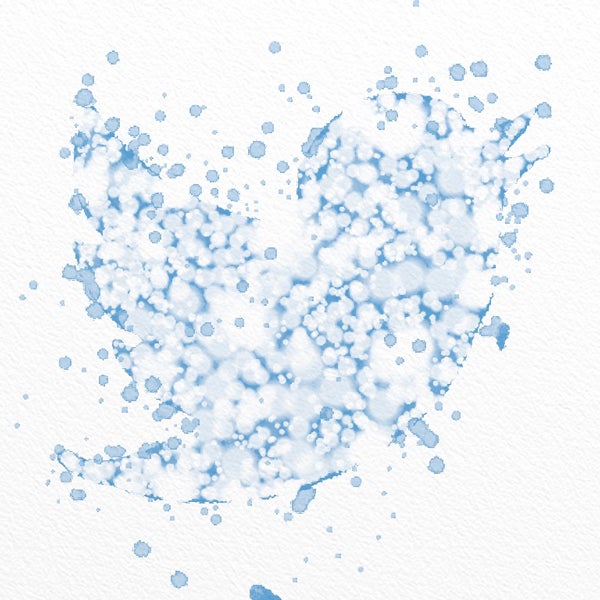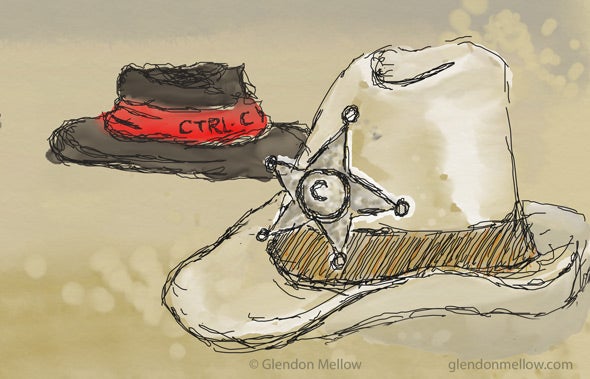This article was published in Scientific American’s former blog network and reflects the views of the author, not necessarily those of Scientific American
Since the internet began and sharing image files was possible, illustrators, photographers and cartoonists - any image makers, really, could potentially have their work ripped off and shared around.
People mostly turned a blind eye to images in email chains, and proto-meme, especially if they were funny and had a cat in them. Of course it was possible to share someone else's written work - a novel, a joke, a news article - without credit, but it didn't happen nearly as much. Well, maybe to the jokes and You Know You Are A Child of the 80's If inbox-spam sent by your cousin.
Written copy simply hasn't been available as single, standalone, shareable units the way gifs, jpgs and pngs have been.
On supporting science journalism
If you're enjoying this article, consider supporting our award-winning journalism by subscribing. By purchasing a subscription you are helping to ensure the future of impactful stories about the discoveries and ideas shaping our world today.

Yes, I'm messing with Twitter's intellectual property without their permission to make this illustration. I'm adding value and promoting their brand. It's about exposure.
Enter social media and embeddable tweets. Now anyone's content can be mined. Ah, "CONTENT" - not just images anymore!
"Content is king." No, content is the illustrations, code, & prose of the hardworking people you're mining.
— Glendon Mellow (@FlyingTrilobite) November 6, 2015
Content belongs to the people, not marketers with King-complexes.
— Glendon Mellow (@FlyingTrilobite) November 6, 2015
Anyway, stop listening to me and go read @anne_theriault on The Dubious Ethics of Twitter Mining: https://t.co/zY5wYh9hHX
— Glendon Mellow (@FlyingTrilobite) November 6, 2015
Anne Thériault is one of Canada's writer-geniuses (seriously, I keep expecting for the local Balzac's Coffee to have Thériault Blend alongside their Atwood Blend), and over at the newly minted site The Establishment, she takes a deeper look at the problem of content mining in her post, The Dubious Ethics of Twitter Mining.
Thériault describes how the stories of women of colour are taken and turned into embeddable tweetfests by mainstream and online media sites, with the flimsy excuse that the tweets are "public". Instead of hiring WOC as writers, sites are simply mining Twitter for stories, and hanging them together with slender narrative threads.
Sound familiar, fellow illustrators? How many times have we seen an image we have made turned into a post for a site making money off of ads? And found out about it through a fan or colleague who spots it and gives us the heads up?
Here on Symbiartic, I can count on 1 hand the number of times I didn't get in touch with a living artist before posting their work - once when they had clear rules on their site and did not get back to me; another time when the item was inarguably newsworthy; and a few embedded tweets when promoting some work looking for crowd-sourcing.
In the past, I've advocated for illustrators, artists, cartoonists and professional photographers to get their own form of a Twitter Verification badge - we put up entire finished, professional images and add value to the platform, after all - and it makes me wonder what lessons illustrators might have learned that could be applied to the very real business and ethical problems that Thériault outlines.

The first lesson that comes to mind I wrote about way back when Symbiartic was a new blog here on Scientific American - form a posse. In, It's Time for Illustrator's to Take Back the Net, I described 4 ways to protect your work. See the 2011 post for greater detail, but here's the list:
Use Google Search by Image and Tineye to control your own brand.
Comment on the site or blog post that an image is uncredited.
Form a posse to take down the worst offenders.
Keep talking about it.
The solution is not just to ask internet sites to engage in better behaviour. Illustrators have been doing that forever, and it's a constant battle. Maybe it's time for the platforms to show some responsibility and make embeddable tweets and Instagrams a form of microtransaction, with the option toggled by the user. Sure, I could embed my own work for free, but if I want to embed someone else's, maybe I should pay for it at the source. You know, a buck to the creator, 5 cents for Twitter.
When your hard work, your writing talent, your lived experience, or your practiced, skilled illustration is turned into just another post at a content churn factory, the most important thing you can do is smack the hand offering exposure, and assert yourself. And make sure to help others doing the same.
____
Links:
@anne_theriault on Twitter
Patreon
Blog